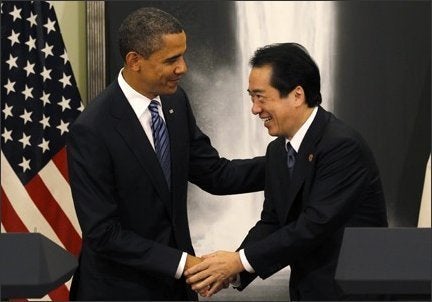
Here's a little history lesson for you: During the presidencies of George Washington and John Adams, the traditional White House greeting was a bow, so as to avoid physical contact with guests. But when Thomas Jefferson came to office, he did away with bows and opted for a handshake. To this day, the handshake remains virtually the sole physical contact among professionals and an important part of everyday business dealings. A good shake is expected and for the most part should go unnoticed, but a bad one could cost you. In fact, in this tight economy, Patricia Fitzpatrick, founder of the Etiquette School of New York, says enrollment for her etiquette classes is up in recent months because job seekers and others want every advantage -- even with the most basic of salutations -- over the competition.
Why is a handshake so important? Because in less than five seconds, a prospective employer, client or business associate can learn a lot about you - whether you're trustworthy, confident and competent, and whether you follow through. Want a handshake that delivers a winning first impression? Here are five things you need to know.
1. Two pumps -- that's it!Fitzpatrick says you should always be ready to initiate or receive a handshake. Squarely facing the other person, you extend your hand with thumb up and fingers out, until you're web to web, then it's two smooth pumps (the American custom, she says), with the shake coming from the elbow. While you're shaking, you should say, "Pleasure to meet you, Mr. Smith," or something along those lines, Fitzpatrick advises. And if you're at an event with name tags, your name tag should be worn on your right so the person can read your name as he or she is shaking your hand. Just hope they do the same.
2. A handshake reflects your personality.Different handshakes convey different traits. You only have a few seconds to "explain" yourself in a handshake, and choosing the wrong one can definitely leave a bad impression. Some of the more common ones include:
- The Winner. A firm handshake, as discussed above..
- The Dead Fish. "The worst handshake in the world," says Patricia Rossi, author of Everyday Etiquette Made Easy. You know which one that is -- the loose, floppy handshake. Rossi says this handshake tells someone you're not fully committed, and it also makes you seem weak and subservient, even though there are times when very powerful people give that handshake.
- The Politician. When you shake with the right hand and cover the shaking hands with your left hand -- it's too personal and too early in the relationship to make that sort of gesture, says Matthew Rothenberg, co-author of You're Better Than Your Job Search. Rossi agrees, noting, "It's like kissing on a first date."
- The Wrestler. That's the vigorous shake that almost rips the arm out of the socket -- and conveys that you're eager, pushy and tend to jump the gun, according to Rossi. Not someone you'd want to do business with, huh?
- The Queen (or "The Fingertip"). Extending just the fingertips conveys to another person, "I'm better than you, and I don't know if I even want to touch you," Rossi says. However, this handshake is OK if you're shaking an elderly, arthritic person's hand.
3. Keep it clean.Try to avoid large rings on your right hand that could make handshaking awkward, and don't wear a fragrance on your hands, Fitzpatrick says. If you tend to have sweaty hands, Rothenberg says you should wipe them on your pants before shaking. And if the hand you just shook was clammy, wait until there is a moment to wipe your hand discreetly, so as to not offend the perpetrator.
4. Demeanor matters.There is much more to a handshake than the tight grip and two pumps -- you also have to consider eye contact, posture and body language. When you first meet someone, Fitzpatrick says, 55 percent of the first impression is your appearance, your posture, whether you maintain eye contact, how you dress and how you shake hands. After that, 38 percent is how your voice sounds, and only 7 percent is what you actually say. "If you can't make a good impression with 93 percent, then it doesn't even matter what you say," she points out. "People don't care."
5. The wrong shake could cost you."Eighty-five percent of success in getting, keeping and advancing in a job is social skills," Fitzpatrick says. So you better know how to interact with people. That includes writing a thank-you note after a meeting with a new or potential client. And when you're meeting a client, remember that "a good handshake and eye contact inspire confidence," says Jill Peters, human resources manager at Meredith. After all, who wants to work with someone who doesn't exude confidence in themselves and their work?
The original version of this article appeared on AOL Small Business on 11/17/10.